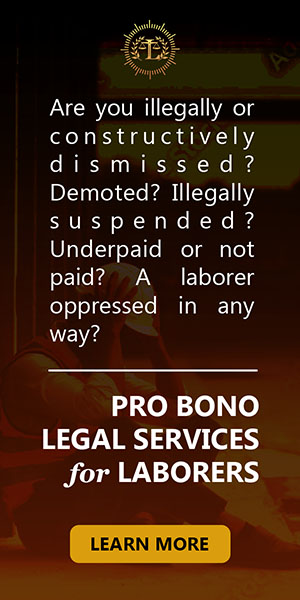CIRCUMSTANCE WHICH AGGRAVATE CRIMINAL LIABILITY (AGGRAVATING CIRCUMSTANCES)
|
Art. 14. Aggravating circumstances. |
The following are aggravating circumstances: |
|
|
|
1. That advantage be taken by the offender of his public position. |
|
|
|
2. That the crime be committed in contempt or with insult to the public authorities.
|
1. That the public authority I engaged in the exercise of his functions
2. That the public authority is not the person against whom th crime is committed
3. The offender knows him to be a public authority
4. His presence has not prevented the offender from committing the criminal act |
|
|
3. That the act be committed with insult or in disregard of the respect due the offended party on account of his rank, age, or sex, or
that is be committed in the dwelling of the offended party, if the latter has not given provocation.
|
|
|
|
4. That the act be committed with abuse of confidence or obvious ungratefulness.
|
Abuse of confidence
Obvious ungratefulness
|
|
|
5. That the crime be committed in the palace of the Chief Executive or in his presence, or where public authorities are engaged in the discharge of their duties, or in a place dedicated to religious worship.
|
|
|
|
6. That the crime be committed in the night time, or in an uninhabited place, or by a band, whenever such circumstances may facilitate the commission of the offense. Whenever more than three armed malefactors shall have acted together in the commission of an offense, it shall be deemed to have been committed by a band.
|
|
|
|
7. That the crime be committed on the occasion of a conflagration, shipwreck, earthquake, epidemic or other calamity or misfortune.
|
|
|
|
8. That the crime be committed with the aid of armed men or persons who insure or afford impunity. |
1. that the men or persons took part in the commission, directly or indirectly 2. that the accuser availed himself of their aid or relied upon them when the crime was committed
|
|
recidivist |
9. That the accused is a recidivist. A recidivist is one who, at the time of his trial for one crime, shall have been previously convicted by final judgment of another crime embraced in the same title of this Code.
|
|
|
Reiteracion or habituality |
10. That the offender has been previously punished by an offense to which the law attaches an equal or greater penalty or for two or more crimes to which it attaches a lighter penalty.
|
1. That the accused is on trial for an offense 2. That he previously served sentence for another offense to which the law attaches an equal or greater penalty or 2 or more lighter penalties than that for the new offense 3. That he is convicted of the new offense |
|
|
11. That the crime be committed in consideration of a price, reward, or promise.
|
Reward must be the primary reason or premordial motive for the commission of the crime |
|
|
12. That the crime be committed by means of inundation, fire, poison, explosion, stranding of a vessel or international damage thereto, derailment of a locomotive, or by the use of any other artifice involving great waste and ruin.
|
|
|
|
13. That the act be committed with evidence premeditation.
|
|
|
|
14. That the craft, fraud or disguise be employed. |
|
|
|
15. That advantage be taken of superior strength, or means be employed to weaken the defense.
|
|
|
alevosia |
16. That the act be committed with treachery (alevosia). There is treachery when the offender commits any of the crimes against the person, employing means, methods, or forms in the execution thereof which tend directly and specially to insure its execution, without risk to himself arising from the defense which the offended party might make.
|
Considered present in: mistake in personnae and aberratio ictus |
|
|
17. That means be employed or circumstances brought about which add ignominy to the natural effects of the act.
|
|
|
|
18. That the crime be committed after an unlawful entry.
|
|
|
|
19. There is an unlawful entry when an entrance of a crime a wall, roof, floor, door, or window be broken.
|
|
|
|
20. That the crime be committed with the aid of persons under fifteen years of age or by means of motor vehicles, motorized watercraft, airships, or other similar means. (As amended by RA 5438).
|
|
|
|
21. That the wrong done in the commission of the crime be deliberately augmented by causing other wrong not necessary for its commissions. |
1. that the injury caused be deliberately increased by causing other wrong 2. that the other wrong be unnecessary for the executon of the purpose of the offender |



 Spotify
Spotify  iTunes
iTunes  AppleMusic
AppleMusic  YouTube
YouTube 


